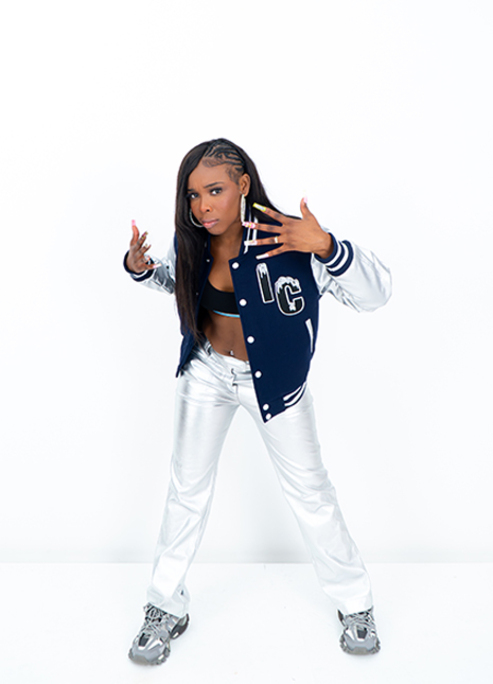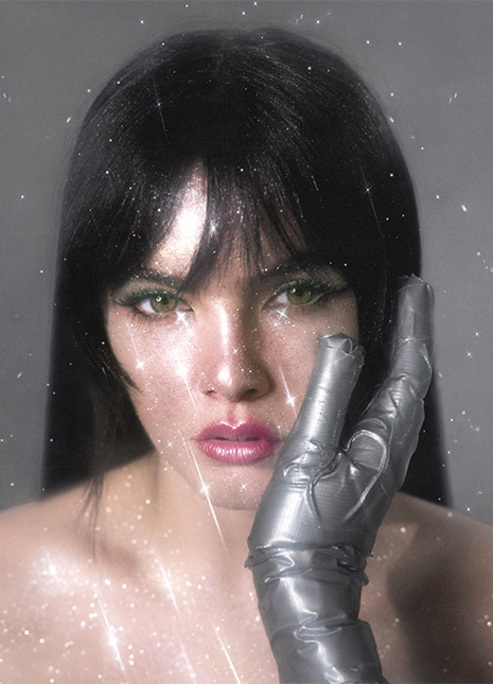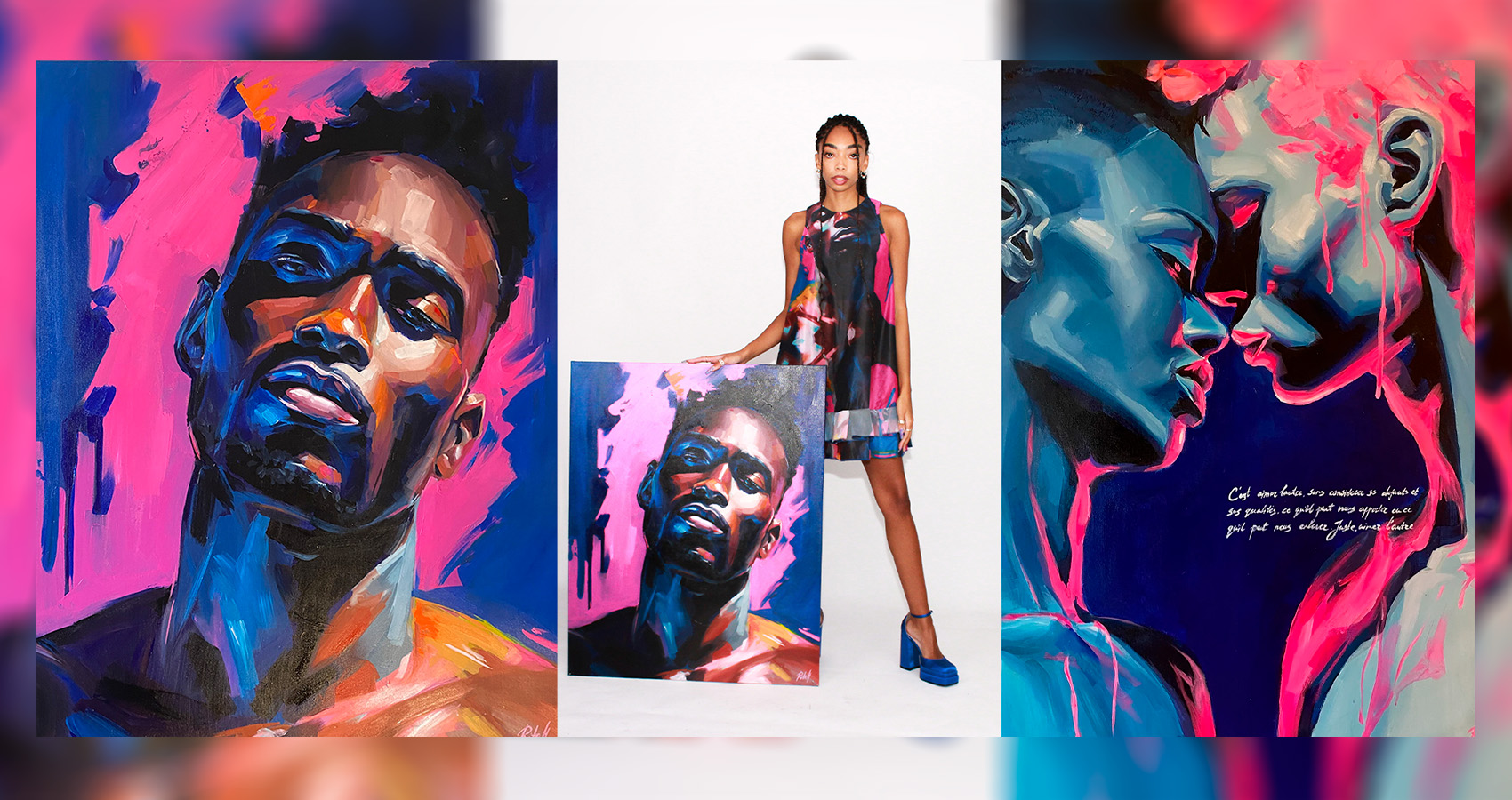
Art Meets Fashion: An Interview with Nikolaj Storm and Margarita Howis
Join us for an exclusive talk about their dynamic collaboration.
Welcome to an exclusive peek into the fascinating crossroads of art and fashion. We are thrilled to share our discussion with Nikolaj Storm, an adventurous fashion designer, and Margarita Howis, a forward-thinking artist. Their collaboration highlights the dynamic connection between their creative pursuits.
Join us to discover their artistic journey, the fusion of their ideas, and what lies ahead for them. Their collaboration is both captivating and insightful. Stay tuned for a glimpse of their outstanding creative endeavors.
"Calm Before the Storm" is a cutting-edge streetwear collection that combines captivating artistry with sustainable fashion. Their most recent project, "Canvas Couture: Bridging Fashion and Fine Art," is a distinctive collection that fuses art and fashion, celebrating uniqueness and inclusivity through sustainable methods and bold designs.

Could you introduce yourselves and give us a little background on how you came to be where you are now?
Nikolaj: I have my own brand, Nikolaj Storm Copenhagen, which I have been working on for five years. I started the brand right after completing my education at the Royal Danish Academy of Arts. Following that, I worked with various brands in Denmark, mainly in Copenhagen, such as Saks Potts, Seven Days Active, and Silfen. I have experience in all areas of fashion, and now I am focusing on my brand while also collaborating with the Copenhagen School of Design and Technology. Currently, I'm conducting my experiments with my brand and working on passing on my knowledge to future generations of designers at the school.
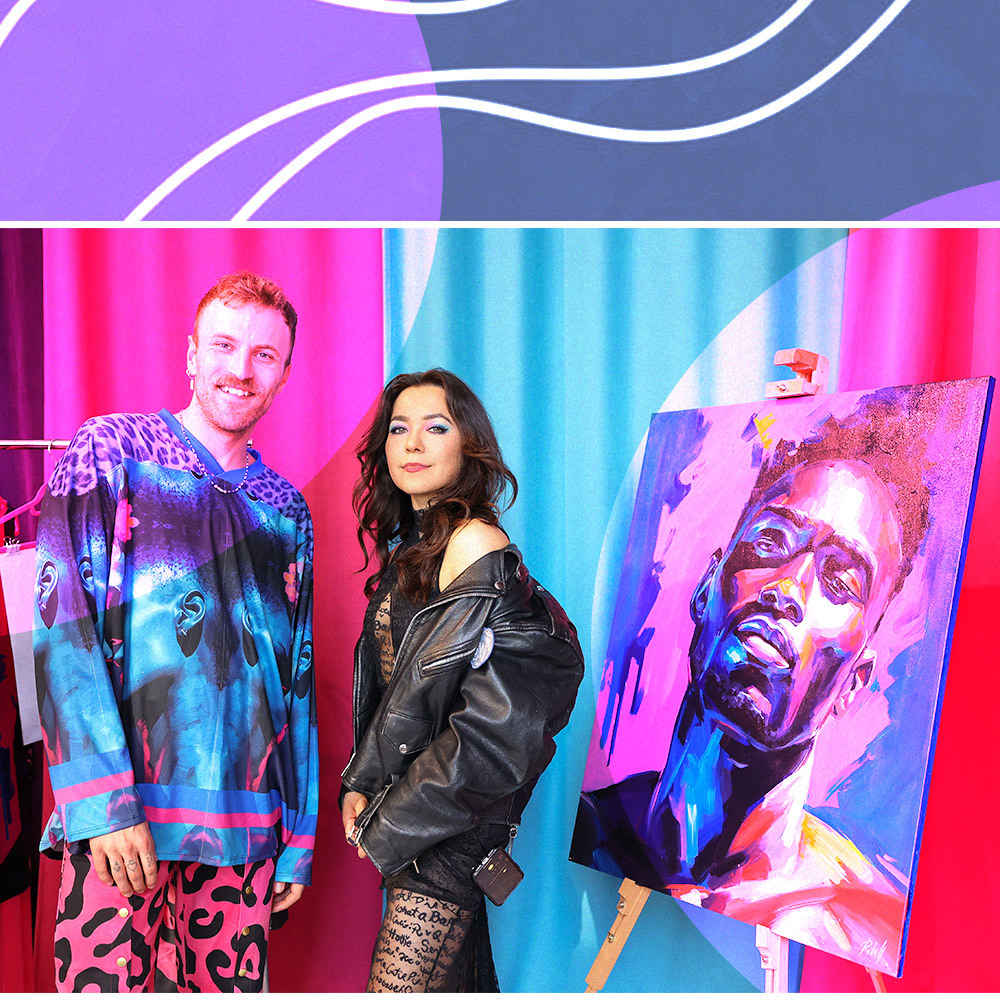
Margarita: I am an international artist currently residing in Copenhagen. I originally pursued a career in architecture, which brought me to Scandinavia. Over time, I transitioned to full-time art, finding it more fulfilling and adventurous, and allowing me to have a stronger voice. I exhibit my work worldwide, extending beyond traditional galleries and canvases to include workshops and brand establishment. My collaboration with Nikolaj stemmed from our shared passion for bridging art and fashion, as I am deeply committed to promoting self-expression.
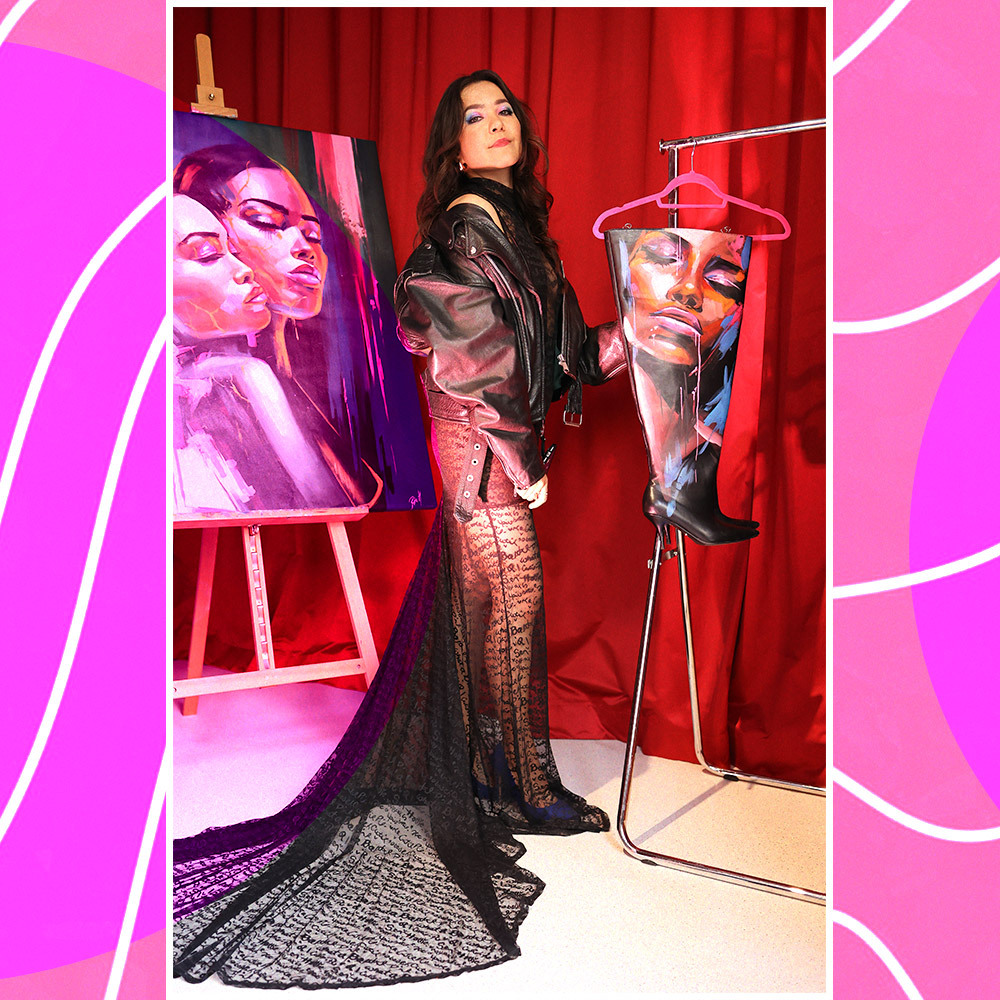
What inspired you to make this collection and inspired you to work together?
Nikolaj: In our collaboration, we work together and share ideas and knowledge. The idea for this collection originated from our first collaboration, which focused on merging the art and fashion scenes. I am particularly interested in reconsidering the value of clothing, as I believe that the rise of fast fashion has led to a devaluation of clothing, with consumers not understanding its true worth.
It's crucial to consider the production and human aspects of clothing. I believe that bridging fashion and art and presenting fashion in a different light is important, especially at a mainstream level, to demonstrate to consumers the high value of both clothing and art.
In this collection, we aimed to delve into this concept further and explore how we could blend the worlds of fashion and art. This time, I incorporated patchworking techniques inspired by painting. I created my own fabric by patchworking different pieces together and allowed the process to guide me, rather than starting with a final design in mind.
What makes this collection different from your previous work in terms of sustainability?
Nikolaj: This time, we focused a lot on using the off-siting and patchworking technique. Most of the styles are made from scraps I had in the studio from sample production. Additionally, we have some styles made of vintage scarves and secondhand sportswear. It's not that old. It's the first time we have done a fully upcycled collection. We also incorporated Margarita's beautiful paintings by printing them on certified fabrics. This allowed us to combine these fabrics with the upcycled and deadstock materials we worked with.
Margarita: We also experimented by painting directly on some of the clothing pieces. This involved taking items from older collections and giving them a new life by making them into statement pieces with hand-painted designs, such as on the back of a blazer and pants in some of our suits. This process is a form of upcycling, where we take a piece, give it a second life, and increase its value.

This new collection involves a lot of bright colors. Imagine you can only use one color in your next campaign. Which color would you choose and why?
Nikolaj: I would probably choose blue if you ask me. It's my signature color, and I always work with it. It started out as the primary color for my first collection, and then it just evolved from there. For me, the blue color represents a global aspect because it is a unique color that suits every kind of ethnicity and race, making everyone look beautiful. I think it's one of the only colors that really does that. I prefer a really rich royal blue.
Margarita: We use a lot of blue in our work, but personally, right now I'm really drawn to purple. I find it very rich, and I think it's the color of transformation and creativity. From the perspective of color therapy, it speaks to me a lot. Purple, blue, and pink are bright and bold colors which represent the art and message for me at this point. It's all about being bold enough to embrace these strong colors.
Where do you look for creative inspiration?
Nikolaj: I feel so inspired by Margarita’s paintings every time we collaborate. I think our first meeting at a fashion event sparked it all. She showed me her work, and I was immediately moved by her techniques, colors, and painting style. Her art translates perfectly into printing, which aligns with my passion for different print techniques. When we work on collections, she shares a couple of pictures with me to set the theme, which gives me the inspiration I need. I combine this with the brand's emphasis on streetwear, 90s influences, and gender neutrality to create the essence of our collaborations.
Is it hard to stay innovative?
Nikolaj: I believe it's incredibly inspiring to merge the worlds of art and fashion. There is so much to learn from each other in terms of color composition, materials, and structures. I love the idea of incorporating techniques from different disciplines into my work. For example, instead of painting directly on clothes, I could create patterns first and then have them painted. This would give a completely new look.
Bridging art and fashion is not only interesting, but it also helps people appreciate the effort that goes into creating unique clothing. By integrating artistic techniques into fashion, we can produce pieces that are both visually stunning and meaningful. This collaboration not only enhances the creative process but also adds depth and dimension to the final products, making them truly special.
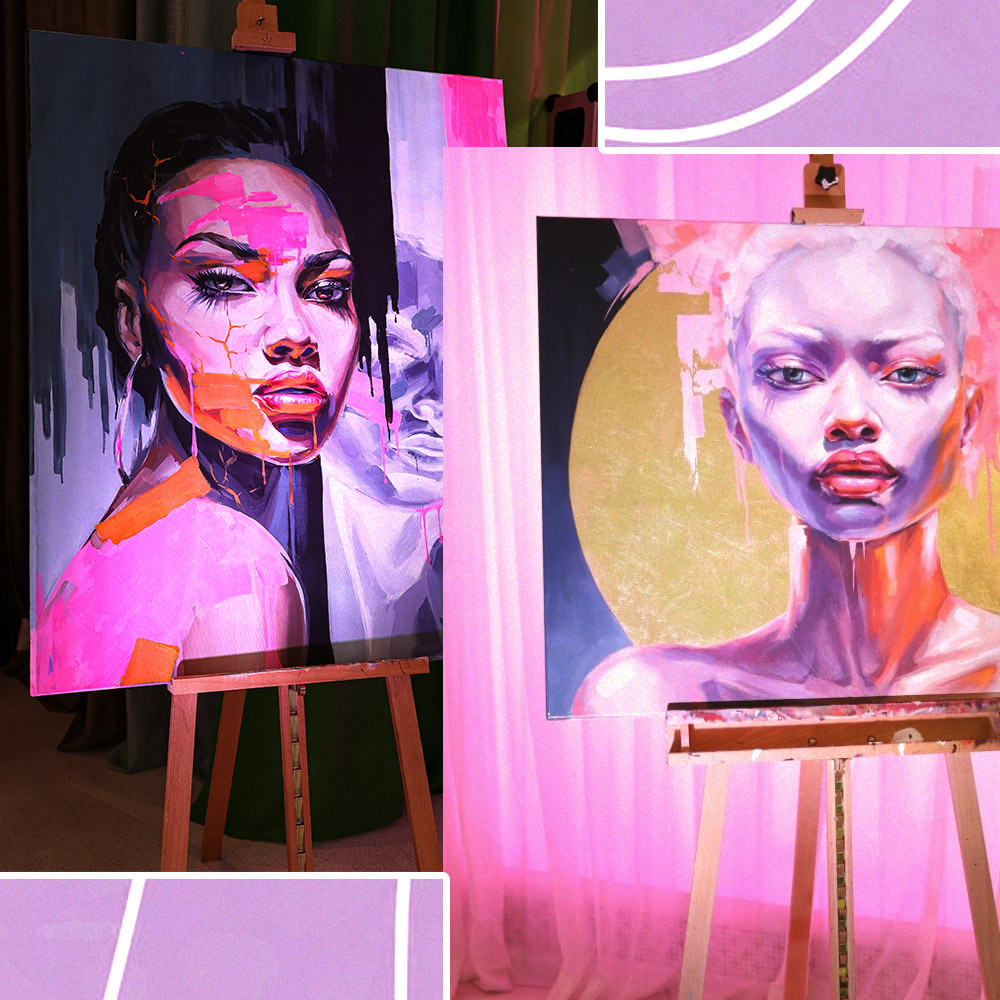
How can fashion and art be used for social commentary or activism? Can you describe a specific design or piece you'd create?
Margarita: So, we have completed two collections and launches. The first collection was based on the resonating theme that stemmed from our meeting and the strong connection in our creative journeys. The message revolved around why, as creatives, we do what we do. This led us to the idea of joining forces and working together as it is all about self-expression and authenticity.
I believe Nikolai stands out so strongly in Copenhagen because he unapologetically creates statement pieces. When we first spoke, Nikolai described how he recognized a gap in the market for unique statement pieces for men, which drew me to his artistry. His vision and commitment to filling this gap were inspiring and aligned perfectly with my own goals as an artist. My own transformation also inspired me to showcase self-acceptance and to inspire others to do the same. Our first collection was called Villain Era, which aimed to encourage others to embrace their dark side instead of pretending to be a hero.
We brought this theme to life through a collection and a series of paintings challenging the seven deadly sins. This exploration allowed us to delve deeper into human nature and societal expectations, creating pieces that were not only visually striking but also intellectually stimulating. When we discussed our recent collection, I felt overwhelmed by everything that's currently happening around us and wanted to create something that focuses on hope, joy, and the light ahead.
One of the focal points of the collection is a painting called Love Transcendence, which I really admire. It depicts two people in an intimate connection without defining their gender. The ambiguity in the painting serves as a powerful statement about love's universality and the importance of looking beyond traditional boundaries. The use of unconventional skin tones and pop colors aims to encourage global reflection on how we interact with one another.
In this way, the collection conveys an important message, whether directly or subtly. By pushing the boundaries of conventional art and fashion, we hope to inspire a more inclusive and understanding society. Our work is a testament to the power of collaboration and the impact that art can have in promoting positive change.
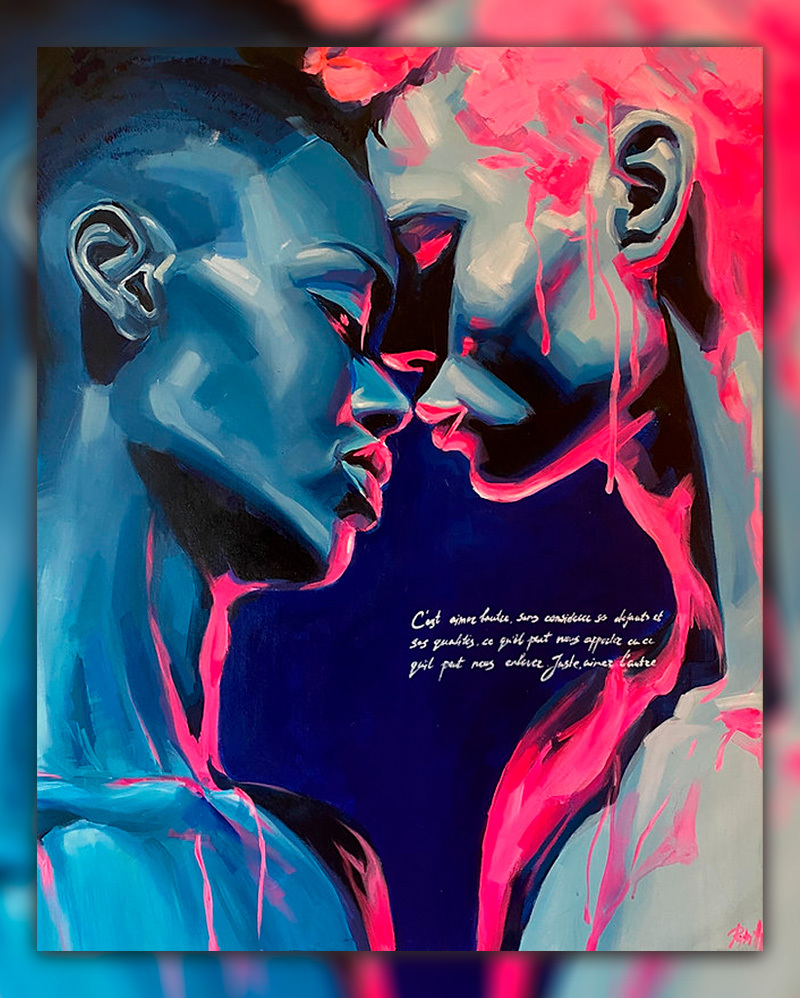
What advice can you give young artists and designers?
Nikolaj: Once you answer these questions – why do you create, what do you stand for, what are your beliefs, and how can your art influence others – it doesn't matter if you express yourself through dance, singing, sewing, or painting. It's about being true to yourself and your creativity, which will make you strong enough to face anything. Trust your instincts, especially as a young designer or artist. Stick to your unique creative language and style, even when faced with challenges. It's important to also consider your political and environmental beliefs and incorporate them into your brand, as authenticity is valued in today's world.
With growing concerns about environmental impact, how do you envision fashion evolving to be more sustainable in the next decade?
Nikolaj: I believe that the next decade will be a period of significant change and upheaval for the fashion industry. It's a complex and multifaceted issue that will require changes in consumer behavior, production practices, and the overall structure of the fashion industry.
I anticipate that we will see a rise in upcycling, more collaborations between different industries, and an increase in the popularity of secondhand fashion. This shift will likely lead to a decrease in the production of new goods. However, I expect that the transition toward a greener industry will be tumultuous and will require a fundamental shift in mindset and systems.
It will take time for people to fully embrace these changes, and we need to find ways to make sustainability inspiring and attractive for everyone. We will need to challenge the culture of overconsumption and find creative ways to upcycle and exchange goods without relying solely on the thrift shop model. It's a complex journey, but with effort and creativity, we can make it appealing to all.



